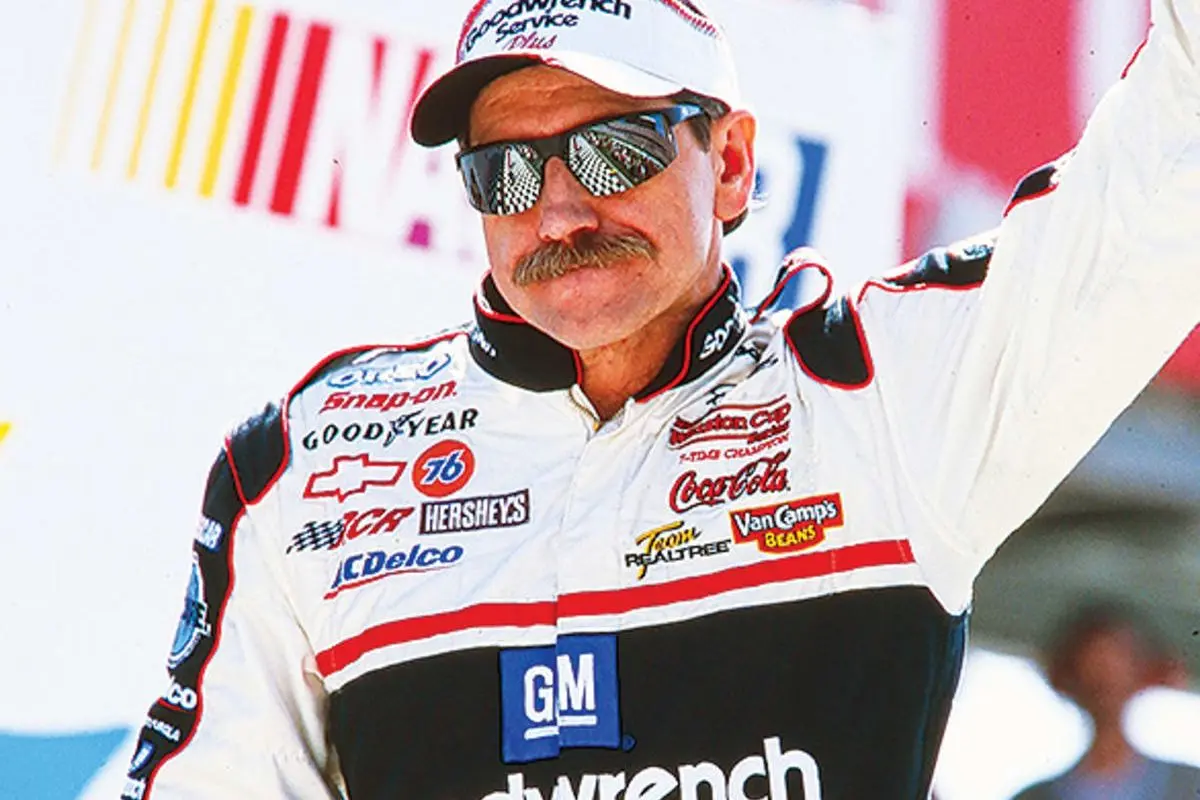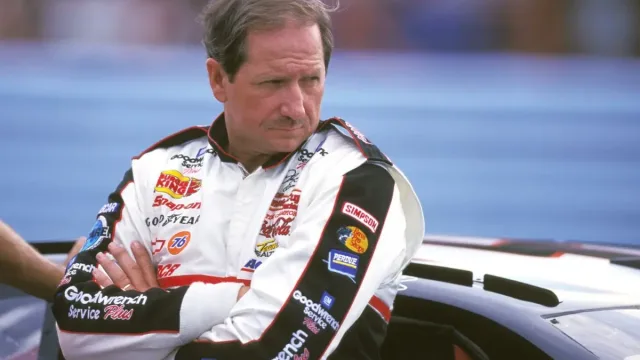When Dale Earnhardt reflected on the racing wrecks of 1994 with a mix of humor and hard-earned lessons. That year wasn’t just about wrecks—it was also about rivalries that shook the NASCAR world. Dale Earnhardt’s fearless approach and sharp wit created moments fans still talk about today. But what did he really learn from those unforgettable incidents? And how did those rivalries shape his legendary career?
Key Highlights
- Dale Earnhardt highlighted the 1994 crash’s role in uniting NASCAR drivers and promoting a collective focus on safety improvements.
- The crash underscored the inherent dangers of racing and the urgent need for enhanced safety measures.
- Earnhardt emphasized learning from the incident to strengthen the sport’s safety culture and driver protection.
- The tragic events of 1994 catalyzed a shift in mindset among drivers, prioritizing safety over competition.
- Earnhardt’s reflections on the crash stressed resilience and unity among drivers in the face of adversity.
Dale Earnhardt and Jeff Gordon’s Rivalry
In NASCAR, rivalries often fuel the drama and excitement that captivate fans, and few were as exhilarating as the one between Dale Earnhardt and Jeff Gordon. This fierce competition was symbolic of a generational shift within the sport. As Earnhardt, the grizzled veteran with seven championships under his belt, faced off against the young prodigy Gordon, new dynamics were introduced to the racing scene.
Gordon, driving the #24 car for Hendrick Motorsports, burst onto the NASCAR Cup scene in 1992 at a time when Earnhardt was at the pinnacle of his career.
The rivalry reached its zenith in 1993, catalyzed by a pivotal incident that involved not only Earnhardt and Gordon but also Ken Schrader. This confrontation on the track was emblematic of their contrasting styles and competitive spirits. Earnhardt, known for his aggressive, tactics, found his match in the fearless and skilled Gordon.
Their duels were not just battles for race wins but also contests for supremacy and respect. This rivalry transcended simple competition, weaving itself into the fabric of NASCAR’s history. It was characterized by mutual respect intertwined with fierce competition, where each driver pushed the other to their limits.
While their on-track clashes often drew headlines, it was their ability to evolve and adapt to each other’s strategies that defined this relationship. Ultimately, the Earnhardt-Gordon rivalry was more than a series of races; it was a defining narrative that highlighted the passion, skill, and relentless pursuit of excellence that is the core of NASCAR.

Dale Earnhardt’s Reflection on Racing Incidents
Reflecting on his career, Dale Earnhardt often found himself contemplating the myriad of racing incidents that shaped his legacy. These reflections were not just about the victories or the losses but about the lessons learned, the friendships formed, and the fellowship among fellow racers.
In a post-race interview from 1994, Earnhardt candidly shared his insights, revealing how each incident on the track was an opportunity for growth and understanding.
Engaging in a light-hearted conversation with Jeff Gordon and Ken Schrader, Earnhardt revisited a particularly memorable race at Phoenix Raceway. Despite finishing in a disappointing 40th place, Earnhardt maintained his characteristic humor and humility.
He recalled how he had inadvertently wrecked both Schrader and Gordon in separate incidents, only to realize the importance of not making enemies on the track. His reflection was not just about the wrecks but about the invaluable lesson of sportsmanship and respect among competitors.
“You can’t wreck two team cars in one time,” he mused, acknowledging the harmony and mutual respect that defined the NASCAR community.
“I learned something from it. I got into [Ken] Schrader earlier, we got together and Schrader wrecked and I was racing [Jeff] Gordon later. Got into him and he wrecked, learned that you can’t wreck two team cars in one time, they’ll team up on you. Them guys are pretty neat guys, the whole group really, the whole bunch of us racers. Everybody races fairly clean, it gets out of hand, once in a while but that’s just cause of hard racing and tempers.” – Dale Earnhardt
The incident highlighted Earnhardt’s philosophy that racing was not merely about speed and skill but about the relationships forged during fierce competition. His words painted a picture of a driver who understood the delicate balance between aggression and respect.
Earnhardt’s reflections serve as a confirmation of his enduring legacy, not only as a formidable competitor but also as a revered figure who championed the spirit of fair play and fellowship in NASCAR.
The Impact of Ernie Irvan’s Accident
The harrowing accident involving Ernie Irvan at Michigan Speedway in 1994 marked a pivotal moment in NASCAR history, underscoring the inherent dangers of high-speed racing. During a practice session, Irvan’s Ford Thunderbird suffered a tire failure, leading to a catastrophic crash that nearly claimed his life. The severity of the incident was tangible; in the immediate aftermath, Doctor Johan Miano had to perform an emergency tracheotomy inside the car to prevent Irvan from drowning in his own blood. His injuries were extensive, including a traumatic brain injury, skull fracture, and considerable chest trauma.
The accident had a profound impact on the NASCAR community. Ernie Irvan, once a divisive figure due to his aggressive driving style, became a symbol of resilience and unity. As Dale Earnhardt himself noted, the incident transformed the collective mindset of drivers and teams: “After the race, everybody gets over it. Somebody gets hurt like Ernie did, and everybody pulls together.”
“After the race, everybody gets over it. Somebody gets hurt like Ernie did and everybody pulls together. Over a year ago, everybody was badmouthing him. Now we want to see him back. He’s doing really good in the championship, he and I was having a great race, when he got hurt. I hate to see that.“ – Dale Earnhardt
Irvan’s grueling rehabilitation process and eventual return to racing in late 1995 served as a showcase of his indomitable spirit. His comeback, marked by finishes of 6th, 40th, and 7th in three races for Robert Yates Racing, was not only a personal triumph but a rallying point for the sport. It illustrated the critical importance of fellowship and support among competitors in the face of adversity.
Ernie Irvan’s accident catalyzed a shift in how safety and community were perceived within NASCAR, nurturing a stronger bond among drivers and a renewed focus on protecting those who risk their lives on the track.
Fatalities in Racing and Safety Concerns
Racing has always been a sport of thrilling speed and high-stakes competition, but it comes with the sobering reality of potential tragedy. The year 1994 serves as a glaring reminder of this, as it witnessed the loss of two NASCAR drivers, Neil Bonnett and Rodney Orr, during practice sessions for the Daytona 500.
These tragedies are not isolated incidents but part of a troubling pattern that has forced the racing community to confront the inherent dangers of the sport.
The fatalities of Bonnett and Orr, along with subsequent deaths such as Kenny Irwin Jr. in 2000 and the iconic Dale Earnhardt in 2001, underscore the urgent need for improved safety measures in racing. Each loss has reverberated through the NASCAR community, prompting drivers, teams, and officials to advocate for changes that prioritize safety without sacrificing the sport’s competitive edge.
- The gravity of high-speed racing: Speeds exceeding 200 mph create a perilous environment where even minor miscalculations can result in catastrophic outcomes.
- Technological advancements: While car and track designs have evolved, the unpredictable nature of racing still poses considerable risks.
- A culture of bravery and resilience: Drivers are acutely aware of the dangers yet remain undeterred, driven by a passion for the sport.
- Collective responsibility: The racing community continually endeavors to balance excitement and safety, ensuring that every race advances both elements.
Dale Earnhardt’s Legacy and Safety Advancements in NASCAR
Dale Earnhardt’s legacy in NASCAR extends far beyond his storied career on the track; it is intricately tied to the groundbreaking safety advancements that followed his untimely death. When the motorsport community lost Earnhardt during the 2001 Daytona 500, it was a clarion call for change. This tragedy, coupled with the deaths of Tony Roper, Adam Petty, and Kenny Irwin, highlighted the urgent need for improved safety measures to protect drivers from the potentially fatal basilar skull fractures that had claimed their lives.
In the wake of these losses, NASCAR initiated a thorough overhaul of its safety protocols. The introduction of the HANS (Head And Neck Support) device in 2001 was a pivotal moment. By allowing the head and body to move together, this device markedly reduced the risk of severe neck and head injuries.
Moreover, the implementation of energy-absorbing barriers in 2002 further improved the safety of the tracks, ensuring that drivers could compete at high speeds without compromising their well-being.
Dale Earnhardt’s enduring influence is evident in these advancements. His legacy is not only enshrined in his seven championships but also in the lives saved by the safety measures inspired by his passing.
As Kevin Harvick aptly noted, the impact of Earnhardt’s death on NASCAR’s safety landscape is unparalleled. Since these changes, no driver has perished on the track, a reflection of Earnhardt’s profound and lasting legacy in shaping a safer future for the sport he loved.
“The impact that he has had after his death on the safety of this sport has been something that’s just far greater than would have happened with anybody else.” – Kevin Harvick
News in Brief: Dale Earnhardt Reflected on the Racing Wrecks
The 1994 crash involving Ernie Irvan served as a pivotal moment in NASCAR history, highlighting the inherent dangers of the sport and catalyzing crucial advancements in safety protocols. The reflective insights of Dale Earnhardt emphasized the intense rivalries and the collective resolve among drivers to improve racing conditions. This incident not only united competitors in a shared mission for safety but also cemented Earnhardt’s legacy as a catalyst for positive change, ensuring a safer environment for future generations of drivers.
ALSO READ: Dale Earnhardt Jr. Denies Naughty List Mention and Sets the Record Straight


